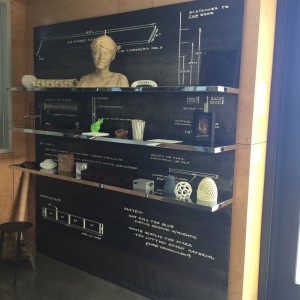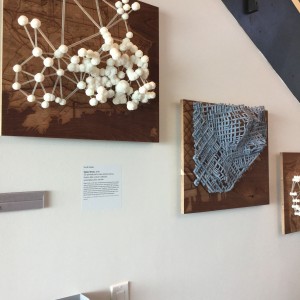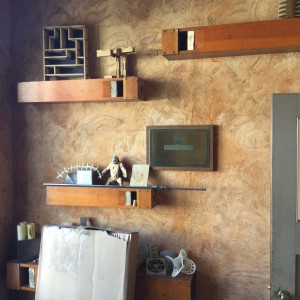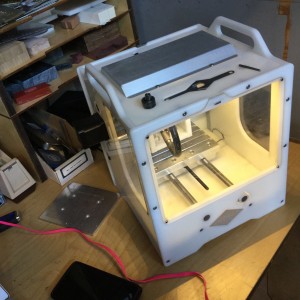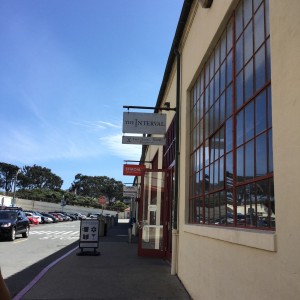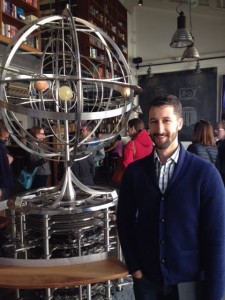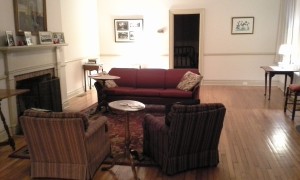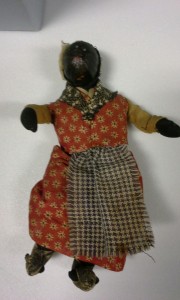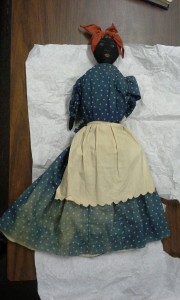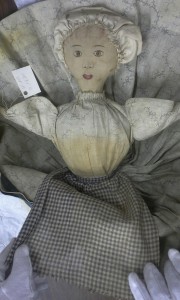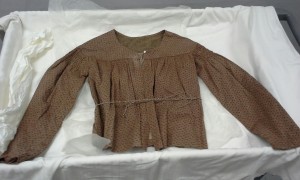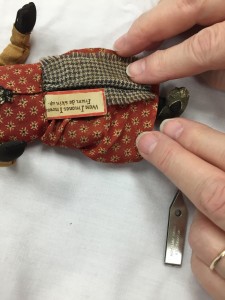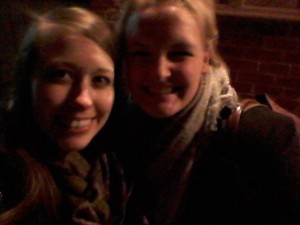Alex Kermes is an art history graduate student and works as a graduate exhibitions assistant. He is currently developing an exhibit site in coordination with Dr. AnnMarie Thomas of the Engineering department that combines technology, art, design, and culture. This space is scheduled to open fall 2015.
Collaborative projects between Art History and Engineering are few and far between. It was no surprise then that as a graduate art history student traveling to San Francisco’s tech industry with Dr. AnnMarie Thomas from the School of Engineering, I understandably encountered a number of raised eyebrows. The art historical value of lasers and 3D printing may not be overtly obvious at first, but the departments of Art History and Engineering have big plans to bring these concepts together. It has been my pleasure to collaborate with Dr. Thomas over the past couple months on the development of an exhibit space in the new Facilities and Design Center, located on the University of St. Thomas St. Paul campus. This space has been designed with the intention of showcasing objects that straddle the fine lines between art and technology.
Our inaugural exhibit will focus on the projects from the Long Now Foundation, which was also what brought us to San Francisco. The Long Now Foundation, headquartered in California, has for many years been developing projects focused on long-term thinking and responsibility (also the theme of the exhibit) – in particular, their 10,000 Year Clock and Rosetta Disk. The 10,000 Year Clock is a monumental object designed to keep accurate time for the next 10,000+ years. On the other end of the scale, the Rosetta Disk is a nickel disk less than 3” across. The disk contains translations of over 1,500 world languages which have been micro-etched with laser and can only be read with a microscope. Through generous donor support, the University of St. Thomas has acquired a copy of the Rosetta Disk, which will be exhibited along with pieces from the 10,000 Year Clock. The exhibit is slated to open during the 2015 fall semester.
Autodesk
- Autodesk – exterior
- Autodesk – interior
Our first visit was to Autodesk, a design company specializing in 3D CAD software which they convert into amazing 3D printed sculptures. Our guides Dawn and Christy were supremely helpful along the way. It was a bit tricky to wrap my head around how they transformed computer designs into 3D objects, but I definitely noticed the breadth of cultural influences at work in the minds of the folks working there. A number of object designs were based on airplanes, action figures, and sea monsters. The sheer capabilities of the place were flat-out cool. They are able to print using multiple materials, multiple colors, or multiple sizes.
One thing I noticed was that the objects were treated like works of art, as witnessed through the way that they were labeled and exhibited throughout their offices. For me, this was important because it shows the interest the company takes in the cultural-technological crossover that design is capable of. Moreover, it affirmed my belief that there are ways to bridge the supposed gap between art and technology, and inspired Dr. Thomas’s and my aspirations for our own exhibit space.
Other Mill/Other Machine
Our second stop was an old pipe organ factory. It has recently been converted into the manufacturer of Othermill, a product of the company Other Machine. They even used old wooden organ pipes as shelves.
This Othermill is a milling machine the size of a microwave that uses CNC (computerized numerical control) to “create 2D and 3D objects out of durable materials, such as wood, metal, plastic, using digital designs.” People utilize the Othermill to create things from relief stamps to circuit boards – how, I don’t know, but that doesn’t make it any less fascinating to me. Dr. Thomas’s friend Simone tried in vain to help me understand. Regardless, she was a wonderfully enthusiastic tour guide during our visit.
The Interval
Ultimately, the reason we embarked on this trip was to meet personally with the minds of the Long Now Foundation and bring home the exhibit’s new copy of the Rosetta Disk. The brainpower of the Foundation was represented by Dr. Laura Welcher and Dr. Alexander Rose.
At The Interval, the foundation’s event space (and bar), they showcased a number of projects they’ve worked on. One of the coolest was a tall metal contraption known as The Orrery. An orrery is a model of the solar system that predicts the positions of planets – and the one at the Interval is huge and immensely cool to look at.
We met up with Alexander and Laura for a lengthy discussion on the numerous ideas they had about their work and how it could be exhibited. Their input was incredibly insightful. Over the course of two hours at the Interval, we talked about scope of the Foundation’s projects and ways in which we could apply it to our exhibit space. It is one thing to display objects and hang labels next to them, but it is another thing entirely to find sophisticated ways to provide viewers of our exhibit opportunities to participate and learn about the ideas being presented. Dr. Welcher’s and Dr. Rose’s suggestions gave us so much to consider while planning our first exhibition of the Long Now Foundation’s projects that we are eager to unveil to the public. Much, much more will follow as our project progresses!
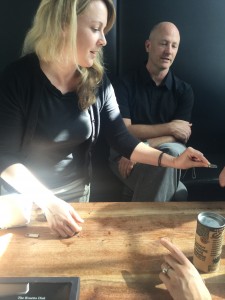
On the left in this picture is Dr. Welcher passing a prototype of their current project in front of Dr. Rose (details of this project are closely guarded for now).
We then collected our Rosetta Disk and concluded our day with dinner. That was the first day of our trip. We still had Saturday in San Francisco, which included some extremely fruitful and inspirational trips as well, but those will be covered in a second part to my blog post.

